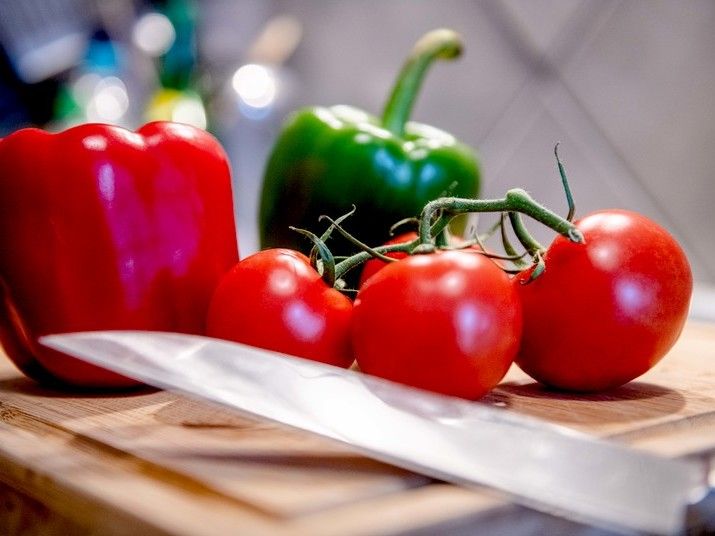What makes peppers blush
Green peppers are unripe and do not ripen
Advertisement
Bright red, tasty and healthy, that's how you know and love paprika. However, what makes them turn red during ripening has been deciphered in detail for the first time at the protein level by the team led by Prof. Dr. Sacha Baginsky from the Department of Plant Biochemistry at the Ruhr University Bochum (RUB). The focus is on so-called plastids, typical plant cell organelles in which chlorophyll is degraded and carotenoids are produced during fruit ripening. Visually, this transformation is clearly visible in the colour change from green to orange or red. The team has documented the process in detail and globally at the protein level and published the results in "The Plant Journal" on 30 November 2020.

What happens during ripening in pepper fruits and how does it differ from tomatoes?
RUB, Marquard
From chlorophyll to carotenoid
Paprika fruits, scientifically Capsicum annuum, are among the most popular vegetables because of their aromatic taste and high concentrations of health-promoting ingredients such as vitamin C and antioxidant provitamin A (carotenoids). Fruit ripening in peppers proceeds from photosynthetically active fruits with high chlorophyll and starch content to non-photosynthetic, carotenoid-rich fruits. Essential steps of this transformation take place in typical plant cell organelles, the so-called plastids.
In the beginning are precursor organelles, the so-called proplastides. They are still undifferentiated and develop into different plastids depending on tissue type and environmental signals. In many fruit and vegetable varieties, the chromoplasts develop from them. "They get their name from their often bright colours," explains Sacha Baginsky. In pepper fruits, proplastides first develop into photosynthetically active chloroplasts from which the carotenoid-rich chromoplasts develop during ripening through the degradation of chlorophyll and the photosynthesis machinery.
The decisive difference to tomatoes
The situation is similar in the tomato, although there is a decisive difference to the pepper: Tomatoes belong to the climacteric fruits that ripen after harvesting. Biochemically, this process is characterized by an enormous increase in respiratory activity with high oxygen consumption, the so-called climacteric. This is not the case with peppers. "The green peppers commonly available in supermarkets are unripe," says Sacha Baginsky. They still carry chlorophyll-rich chloroplasts and, when the pepper is fresh, also contain a large amount of the photosynthetic storage substance starch. "Our data now show some differences in the chromoplast differentiation between pepper and tomato at the molecular level, which provides insights into the different metabolism of climacteric and non-climacteric fruits," said the biologist.
One example is the energy metabolism. For example, the protein PTOX - for plastid terminal oxidase - which transfers electrons to oxygen in the course of carotenoid production and thus generates water, is only present in small amounts in peppers. This could result in lower oxygen consumption and be associated with increased ATP synthesis. Chromoplasts use modules of photosynthetic electron transport for ATP synthesis, which in peppers at least partially passes through the so-called cytochrome b6/f complex and plastocyanin, which is present in large quantities in contrast to tomatoes. Small amounts of PTOX in paprika could mean that more electrons from carotenoid production flow via this pathway to a previously unknown oxidase and thus more ATP can be produced.
Producing carotenoids more effectively and sustainably in plants
"This is just one example of several, sometimes subtle differences in the metabolism of tomato and pepper chromoplasts," explains Sacha Baginsky. "Our data opens up a new understanding of chromoplast differentiation, which we will now investigate further." For example, the Bochum team will use a system described by a Spanish group in which the chromoplast differentiation in leaves is induced by the production of a single enzyme (10,1073/pnas.2004405117). This could indicate ways to produce carotenoids more effectively and sustainably in plants. The data collected so far are freely available through the Pride database.
Note: This article has been translated using a computer system without human intervention. LUMITOS offers these automatic translations to present a wider range of current news. Since this article has been translated with automatic translation, it is possible that it contains errors in vocabulary, syntax or grammar. The original article in German can be found here.





























































